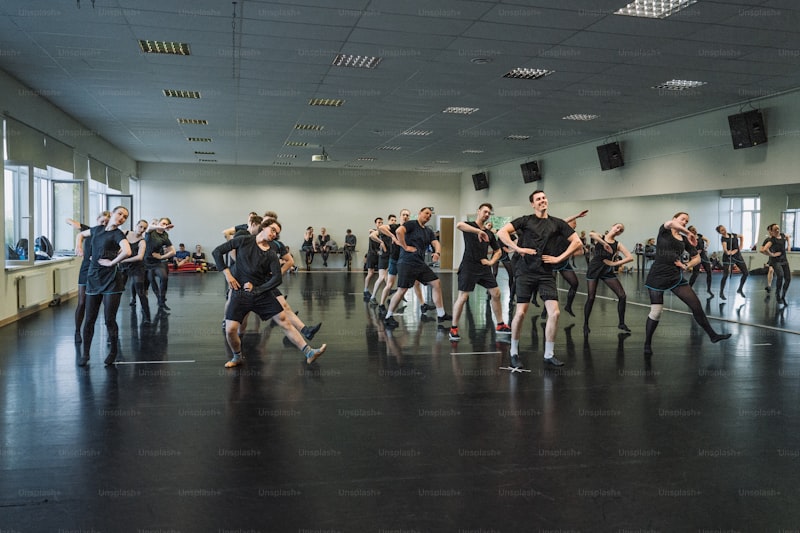Exploring Music and Dance as Central Elements in Culture and Community
The Importance of Music and Dance in Human Expression
Music and dance have always been integral to human culture, acting as universal languages that convey emotion, tell stories, and strengthen community bonds. Across different regions of the world, these art forms serve as essential components of celebrations, rituals, and everyday life. In this article, we will explore how music and dance function as central elements within various contexts, and the profound impact they have on both individuals and society.
Historical Significance of Music and Dance
Historically, music and dance have been intertwined, evolving together as forms of expression. For instance, ancient civilizations used music in religious ceremonies, often accompanied by dance to enhance the spiritual experience. In cultures such as the African tribes, dance is performed during communal gatherings to celebrate harvests, marriages, and other milestones, with specific rhythms and movements representative of that community's heritage.
Music and Dance in Different Cultures
| Region | Music | Dance |
| Africa | Drumming, singing | Traditional tribal dances |
| Latin America | Salsa, Tango | Salsa dancing, Tango |
| Asia | Traditional instruments (Gamelan, Erhu) | Classical dances (Bharatanatyam, Kabuki) |
| North America | Blues, Jazz | Hip-hop, Line dancing |
Music as a Tool for Cultural Identity
Music is not only a form of entertainment but also a powerful means of cultural identification. Genres such as Reggae from Jamaica or Flamenco from Spain reflect the unique historical and social narratives of their communities. Artists often embed elements of their cultural backgrounds into their work, allowing listeners to connect with their roots and fostering a sense of belonging in an increasingly globalized world.
Moreover, music can convey messages of social justice and change. Songs that address issues such as poverty, racial inequality, and political struggles contribute to societal awareness and motivate action. For instance, the Civil Rights Movement in the United States saw the emergence of powerful protest songs that galvanized support and unity among marginalized communities.
The Role of Dance in Social Cohesion
Dance serves as a communal activity that enhances social bonds. Participating in group dances, whether in a formal setting or informal gatherings, creates a sense of connectedness among individuals. The act of moving together in rhythm fosters cooperation, understanding, and often transcends linguistic barriers.
Benefits of Dance in Community Settings
Dance in community settings has numerous benefits:
- Physical Health: Dance is a great way to promote fitness and reduce stress, allowing individuals to engage in physical activity while enjoying themselves.
- Cognitive Development: Learning dance routines improves memory and cognitive function, particularly in older adults.
- Emotional Expression: Dance allows individuals to express themselves non-verbally, helping to improve emotional well-being.
- Cultural Preservation: Many dance forms are passed down through generations, preserving cultural heritage and traditions.
The Intersection of Music, Dance, and Modern Technology
With the advent of technology, the music and dance landscape has significantly transformed. Digital platforms such as YouTube and TikTok have provided new avenues for artists to showcase their work, while users can participate in global dance challenges and trends. These platforms allow for a blend of traditional and modern expressions, enabling creators to reach wider audiences and fostering cross-cultural collaborations.

Conclusion: Embracing Music and Dance as Cultural Cornerstones
Music and dance remain central elements of human experience, reflecting our history, culture, and identity. They foster community ties, provide avenues for emotional expression, and enable social cohesion. As we navigate an evolving world influenced by globalization and technology, embracing these art forms is more vital than ever. Engaging in music and dance not only enriches individual lives but also strengthens the connections that bind us together as a society.
In summary, whether through traditional practices to modern expressions, music and dance will continue to play significant roles in shaping cultures and communities. It’s essential to support local artists, participate in community events, and appreciate the diversity these art forms offer. Remember, as you explore music and dance, you are not just enjoying art; you are partaking in an age-old tradition that connects humanity across borders.
Considerations and Recommendations:When engaging with music and dance from different cultures, remember to approach these art forms with respect and an open mind. Understanding the cultural significance behind them can deepen your appreciation and ensure you contribute positively to the communities you engage with.